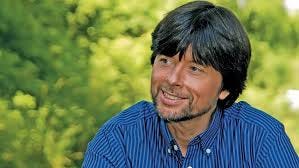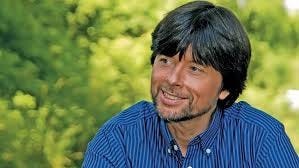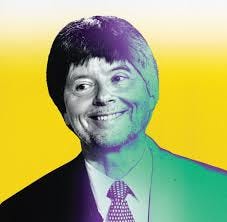Ken Burns' advice for creating great work (#85)
The all-world documentarian on what he calls 'the luxury of time'
“The longer the lever the less perceptible its motion,” wrote Henry David Thoreau.
It is the slowest pulsation which is the most vital. The hero then will know how to wait, as well as to make haste. All good abides with him who waiteth wisely.
This idea—of simultaneously waiting while also making haste—is one of those ideas that seems obviously right, but remains hard to consistently apply. So how do you get yourself in the mindset to want to do it? How do you make it seem more attractive to, as Thoreau put it, waiteth wisely?
The all-world documentarian, Ken Burns—the visionary behind films such as The Civil War and The Roosevelts: An Intimate History— has, I think one of the best ways of looking at this.
In his Masterclass, Burns explains a method of creation that makes long-term thinking seem compelling and, almost, fun.
And it’s the subject of today’s OGT.
The Luxury of Time
Burns creates in-depth documentaries on critical events in US history: the two world wars, Vietnam, the invention of baseball, The Brooklyn Bridge.
Because of this, and because of Burns’ maniacal insistence on both objectivity and accuracy, many of his films take a long time to make. Vietnam, for instance, took Burns ten years to make.
You would think Burns views this as a downside—a tax of making his films. A bug. But he doesn’t.
Burns see’s this time as his works prized feature. As his defining strength:
Everybody wants to run for the b-line, everybody wants to have it done. And I get it….
We substitute convenience, speed, and “whooooo, done!,” for process.
But ‘done’ is not to be rushed at—not if you’re seeking greatness. Instead, Burns says, the thinking about any important project with a long time horizon. Slow it down.
What you really want is to keep the scaffolding and falsework around that construction project for long enough that you’re very sure that the building will stand by itself. You have to do that…
In other words, he says, it shouldn’t be quickest to ‘done,’ but instead follow this line of thinking:
Not done, not done, not done, not done, not done, not done…
…
Done.
There are two tests, Burns says, that you must clear before you decide to make films.
The first one is: is this what I want to do, and do I have something to say? Once you’re sure of that, you move to #2. The second question to ask is: am I willing to persevere?
If you know who you are and you’re willing to persevere, now we can start.
He leaves the creator with this advice:
Give yourself the luxury of time. All meaning accrues over time
The OGT: Time as a strength
There are at least two ways to do great work.
Burns opts for the second, but often, we only hear about the first.
The first is the Saturday Night Live route. The show has to be ready by Saturday at midnight, ready or not. Six Days To Air was the heroic name of the great South Park documentary. Crunched for time, and yet they deliver. These guys are good.
The upsides of this route are two:
It creates hard constraints that limit reliance on resources. This forces you to try things that often lead to creative solutions.
As Seth Godin says: ‘the only way to produce good ideas, is to have a lot of bad ones.’
I think both of those benefits are powerful and true.
But they have a downside.
I felt this downside as did OGT twice per week for eight months. The downside is that you move forward even when you know it’s not as good as it could be. Simply because it was Saturday or Wednesday, I needed to come up with something, and quick. The question that soon occurred to me: Am I really doing my best work? Could I possibly be?
That’s why, for me, SNL and South Park have about a 10-20% hit rate, and the rest isn’t really that good. This, by the way, will produce a lot of good stuff over the course of 10 or 20 years, which is why these are all world shows. But isn’t that also the luxury of time?
I don’t love that model. Consider, instead, a show like Key and Peele.
Rather than have a new episode every week, Key and Peele decided to hammer away at episodes dozens of times, often taking six months or more to complete just a handful. Each sketch received 5-10x more time, more edits, more drafts, more takes, than SNL. In a recent interview Key said Jordan Peele repeated over and over: “It’s just gotta be bulletproof. We have to outwork everyone else.”
The result: basically every single sketch is funny.
“Give yourself the luxury of time,” Burns said. “All meaning accrues over time.”
The more I pursue any hard thing—whether it’s figuring out my diet, building a business, writing a book, or simply trying to get better at basketball, I’ve found this to be the case. That the person who cares, and cares for longer, who see’s through a longer lens, has the best chance of doing meaningful work.
It doesn’t mean you don’t workshop the materials. You still test, but in a small way. The standup comedian tests his material 1000 times the year before that joke makes it to a Netflix Special. But most of those jokes won’t find themselves into something that works for years, sometimes decades. Gary Gulman says it took him about 20 years to cobble together his best joke about state abbreviations.
So I try to, in every endeavor, remind myself to indulge in the luxury of time. To remember what Robert Greene says, to “embrace slowness as a virtue.” But do so in that way that Thoreau said —to wait, but make haste, to waiteth wisely. To push, but at the same time, to keep the scaffolding and falsework up long enough to make sure the building will stand.
Don’t say to yourself, six days to air. Don’t say, it’s got to go on because it’s Saturday. Don’t say, fewwww, done!
Be comfortable, instead, with saying: not done, not done, not done, not done….
OK.
Done.
[1] Of course, “health” is never done. It’s asymptotic, not linear.






Ok…
Done.